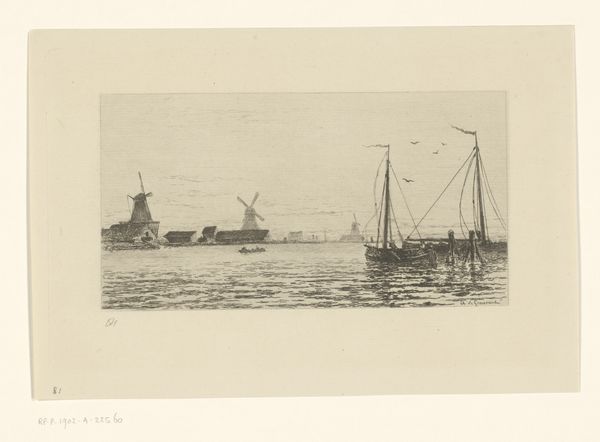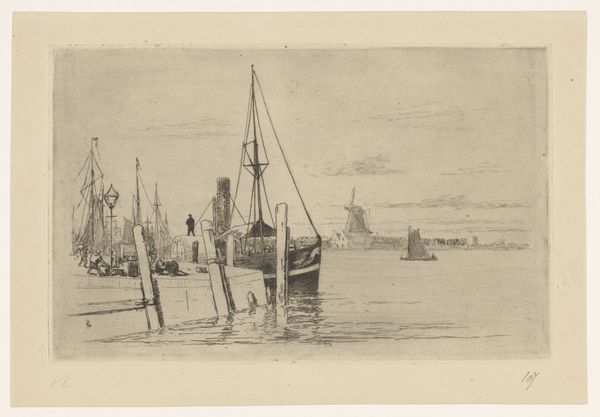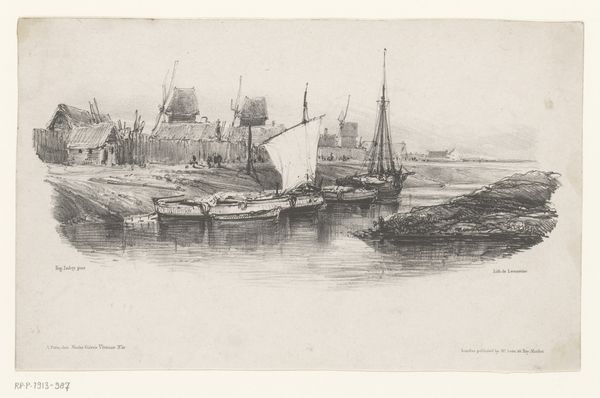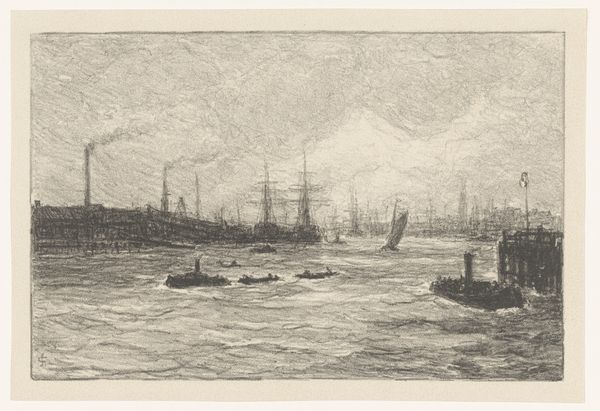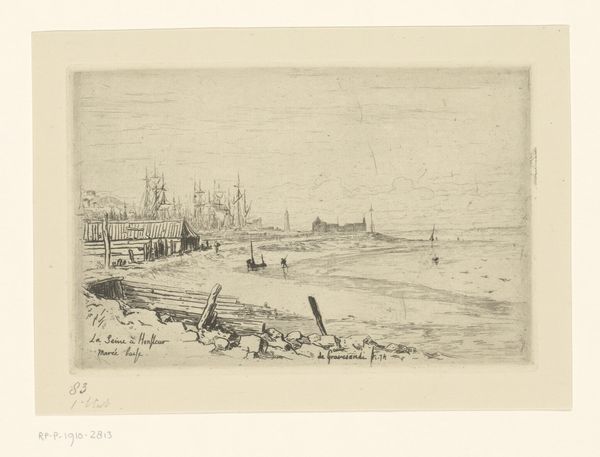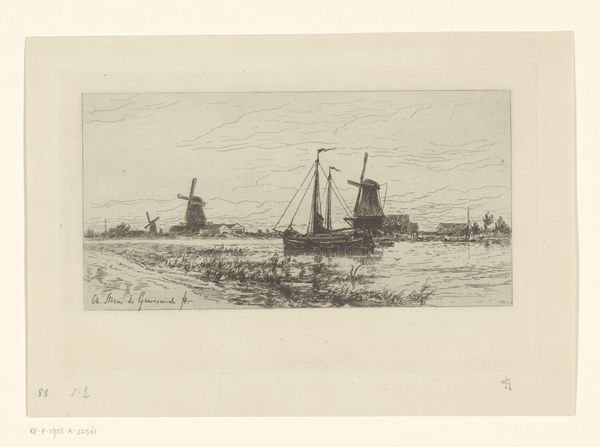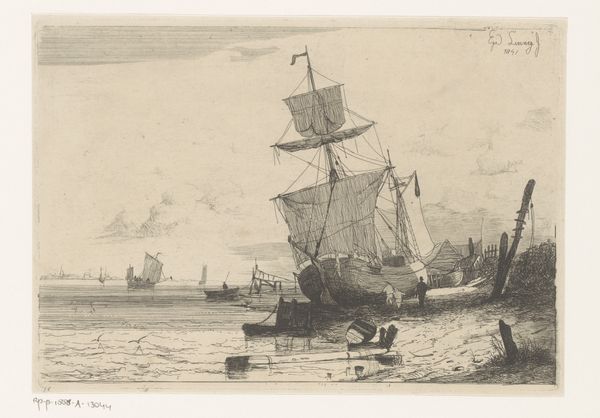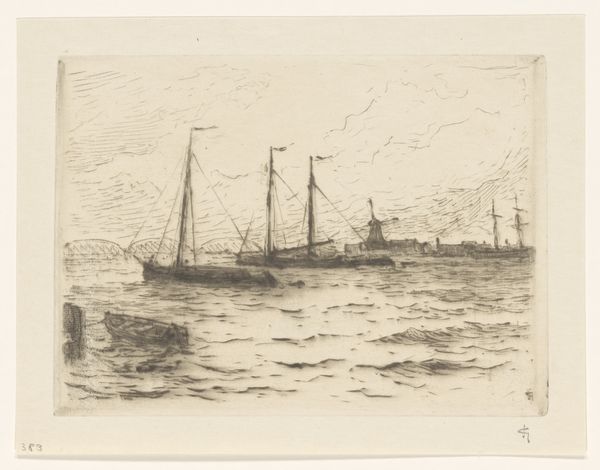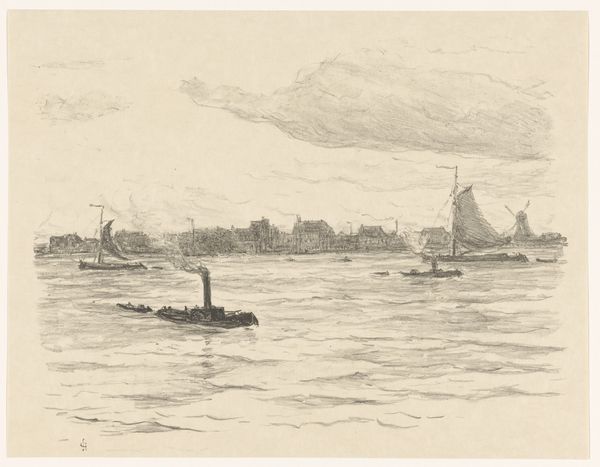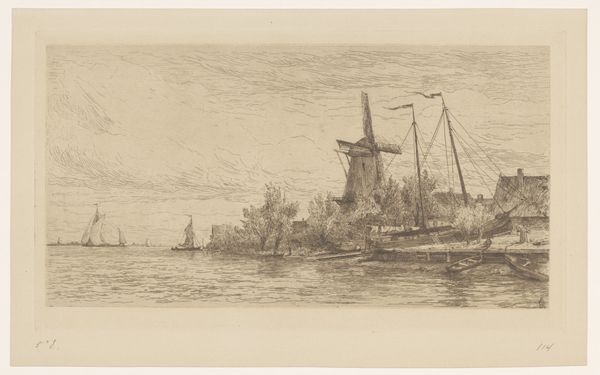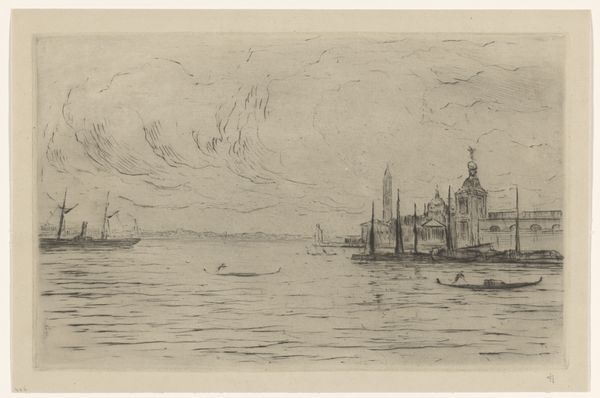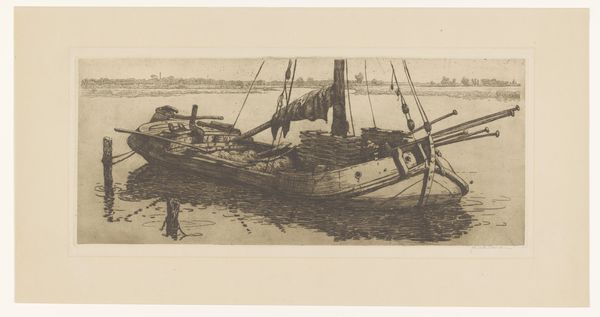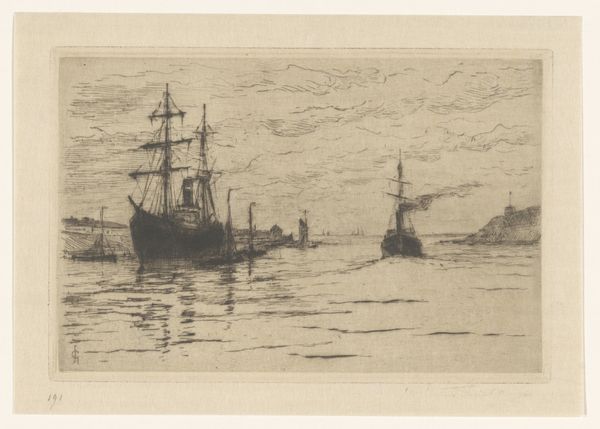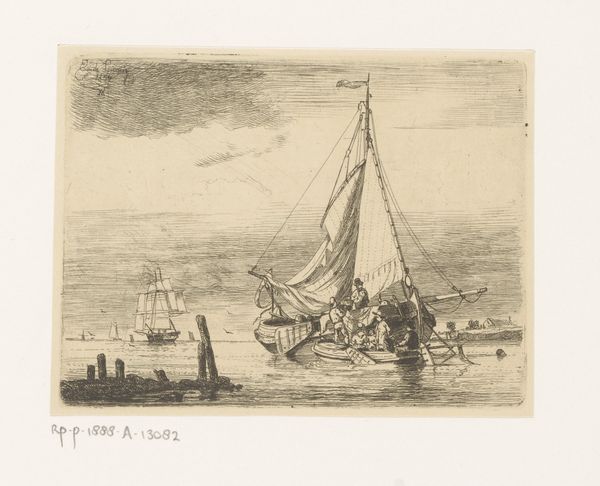
drawing, print, etching
#
drawing
#
ink paper printed
# print
#
etching
#
pencil sketch
#
landscape
#
pen-ink sketch
#
realism
Dimensions: height 120 mm, width 178 mm
Copyright: Rijks Museum: Open Domain
Editor: This is "Gezicht op de Schelde bij Burcht," a landscape print by Carel Nicolaas Storm van 's-Gravesande, around 1872. The details of the boats and figures are amazing! What historical factors influenced this sort of everyday landscape subject? Curator: Well, let's think about the context. Etchings like these gained popularity with the rise of the middle class and their desire for accessible art. How do you think the industrial revolution, evident in the steamship in the background, is being portrayed? Editor: I see it more in the background than as a primary focus. It doesn't dominate, so it isn't a glorification. The artist seems more interested in the daily life of people by the water, despite this massive shift underway. Curator: Precisely. And who are these people? What labour might they be engaged in? This isn’t just a pretty picture; it’s a snapshot of a specific socio-economic moment, right? Note also that most depictions of industrial development at this time period excluded humans from these settings. Editor: I didn’t catch the artist making a choice to actively insert laborers! The laborers look anonymous, everymen. Their posture looks laboured, backs bent towards the river. This seems to highlight the plight of the common man. I would assume these labourers had more connection with each other than any to their industrial counterparts! Curator: And think about how that informs our understanding of the artist's potential sympathies and critiques. Do you get a sense the artist sympathises with industrial progress or perhaps finds himself skeptical of it? Editor: He is decidedly skeptical! He gives more visual real estate to people than to a puffing machine. Seeing art as activism feels so obvious, but is something I definitely need to reflect more on. Thank you! Curator: And it's crucial that art historians continually interrogate historical frameworks when describing and analysing works of art! Thank you for your insights too.
Comments
No comments
Be the first to comment and join the conversation on the ultimate creative platform.
